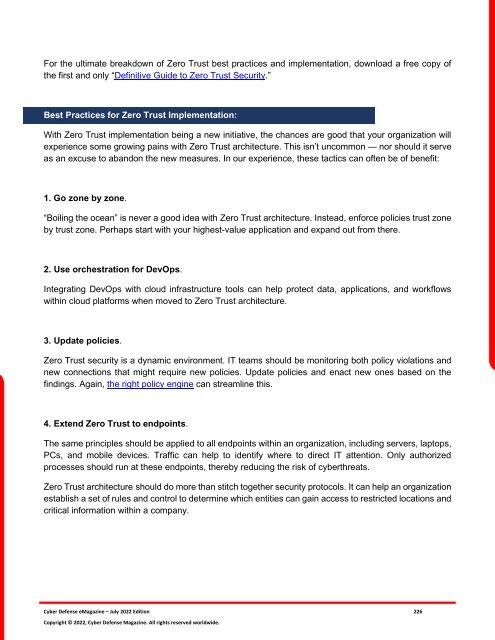Cyber Defense eMagazine July Edition for 2022
Cyber Defense eMagazine July Edition for 2022 #CDM #CYBERDEFENSEMAG @CyberDefenseMag by @Miliefsky a world-renowned cyber security expert and the Publisher of Cyber Defense Magazine as part of the Cyber Defense Media Group as well as Yan Ross, Editor-in-Chief and many more writers, partners and supporters who make this an awesome publication! Thank you all and to our readers! OSINT ROCKS! #CDM #CDMG #OSINT #CYBERSECURITY #INFOSEC #BEST #PRACTICES #TIPS #TECHNIQUES
Cyber Defense eMagazine July Edition for 2022 #CDM #CYBERDEFENSEMAG @CyberDefenseMag by @Miliefsky a world-renowned cyber security expert and the Publisher of Cyber Defense Magazine as part of the Cyber Defense Media Group as well as Yan Ross, Editor-in-Chief and many more writers, partners and supporters who make this an awesome publication! Thank you all and to our readers! OSINT ROCKS! #CDM #CDMG #OSINT #CYBERSECURITY #INFOSEC #BEST #PRACTICES #TIPS #TECHNIQUES
Create successful ePaper yourself
Turn your PDF publications into a flip-book with our unique Google optimized e-Paper software.
For the ultimate breakdown of Zero Trust best practices and implementation, download a free copy of<br />
the first and only “Definitive Guide to Zero Trust Security.”<br />
Best Practices <strong>for</strong> Zero Trust Implementation:<br />
With Zero Trust implementation being a new initiative, the chances are good that your organization will<br />
experience some growing pains with Zero Trust architecture. This isn’t uncommon — nor should it serve<br />
as an excuse to abandon the new measures. In our experience, these tactics can often be of benefit:<br />
1. Go zone by zone.<br />
“Boiling the ocean” is never a good idea with Zero Trust architecture. Instead, en<strong>for</strong>ce policies trust zone<br />
by trust zone. Perhaps start with your highest-value application and expand out from there.<br />
2. Use orchestration <strong>for</strong> DevOps.<br />
Integrating DevOps with cloud infrastructure tools can help protect data, applications, and workflows<br />
within cloud plat<strong>for</strong>ms when moved to Zero Trust architecture.<br />
3. Update policies.<br />
Zero Trust security is a dynamic environment. IT teams should be monitoring both policy violations and<br />
new connections that might require new policies. Update policies and enact new ones based on the<br />
findings. Again, the right policy engine can streamline this.<br />
4. Extend Zero Trust to endpoints.<br />
The same principles should be applied to all endpoints within an organization, including servers, laptops,<br />
PCs, and mobile devices. Traffic can help to identify where to direct IT attention. Only authorized<br />
processes should run at these endpoints, thereby reducing the risk of cyberthreats.<br />
Zero Trust architecture should do more than stitch together security protocols. It can help an organization<br />
establish a set of rules and control to determine which entities can gain access to restricted locations and<br />
critical in<strong>for</strong>mation within a company.<br />
<strong>Cyber</strong> <strong>Defense</strong> <strong>eMagazine</strong> – <strong>July</strong> <strong>2022</strong> <strong>Edition</strong> 226<br />
Copyright © <strong>2022</strong>, <strong>Cyber</strong> <strong>Defense</strong> Magazine. All rights reserved worldwide.


















